How to Put Shadowing on a Resume - Examples
Here's how to put shadowing on a resume. Because you can have minimal work experience to include on your resume/CV when you first start out, job shadowing is an alternative. Job shadowing can also be a strong reference to improve the credibility of your resume/CV and talents if you have been out of the industry for a while or are changing careers.
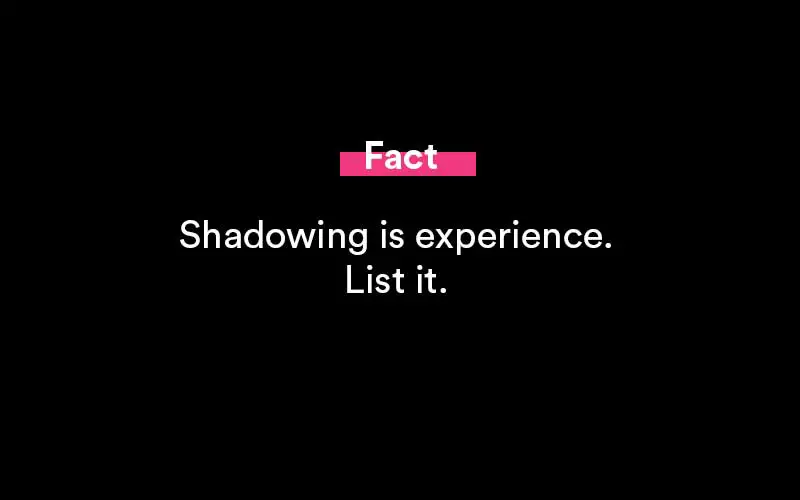
When hiring managers are considering you for a position, knowing how to correctly mention your shadowing experience can help them swiftly and accurately assess your skills.
What is job shadowing or shadowing?
Job shadowing is an excellent way to get experience in a particular field of interest. Shadowing experiences differ per profession, but in general, you follow an employee in the role you're studying and witness their everyday activities. You can also get the opportunity to participate in some hands-on training. After shadowing, you can frequently ask questions about what you observed and experienced, as well as the work itself.
Job shadowing can be offered through your school or academic program, or you can approach companies and seek chances on your own. Job shadowing is beneficial for fresh graduates as well as experienced professionals seeking a career move.
In general, work shadowing entails:
- A good representation of what a job in the actual world will be like.
- It's an excellent way to see if your talents are a good fit for the job and the profession in general.
- A short-term commitment that allows you to make rapid decisions prior to finishing your education or looking for employment.
- A great place to find meaningful contacts with professionals in your subject of interest.
Benefits of listing shadowing on a resume
The advantages of include shadowing on your resume
If you're debating whether or not to include job shadowing on your resume, you should know that it's perfectly fine and even recommended. The following are some of the advantages of having shadowing on your resume:
- It demonstrates your commitment to your future career.
- It demonstrates that you're prepared for the job and understand what to expect in the workplace.
- It shows that you are eager to learn.
- It demonstrates your dedication to and enthusiasm for the position you've chosen.
- It establishes you as a strong candidate for the position.
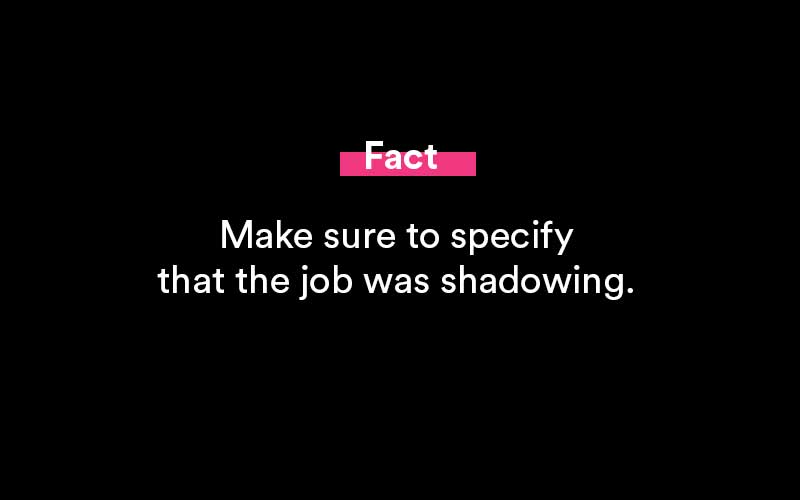
How to list job shadowing on a resume
Your resume's work experience section provides a list of your previous employment or work-related activities, such as shadowing. Your employment history should be provided in reverse chronological order, with the most recent job or other work experience stated first.
Create your work experience section
Following a template is a great method for adding shadowing experience to your resume, here are some items to include:
- Title of work experience: It'll be called "Shadow Experience."
- Name of the company: Include the name of the company or organization where you did your shadowing.
- Geography: Enter the location of the company where you shadowed (including city and state).
- Experiential dates: Include the dates that correspond to the time period that you shaded. Include the dates when you began (month and year) and when you finished.
- Duties: Completing tasks or gaining experience: Explain your responsibilities or what you saw while shadowing.
- Your name and title: In some cases, notably for medical and clinical shadowing, you might add the name of the person you observed.
Use action verbs
When describing your work shadowing experience, utilize action verbs to convey what you learnt or the activities you completed.
Here are examples:
- Collaborated
- Contributed
- Acknowledged
- Encouraged
- Embraced
- Joined
- Participated
- Volunteered
- Partnered
- Diversified
- Delivered
- Inspired
- Motivated
- Initiated
- Improved
- Exceeded
Job descriptions can also be used to identify important keywords to include in your job shadowing experience and duties. Limit your bullet points to no more than six responsibilities that you did or saw. Make sure those points give enough information to demonstrate how you can add particular value to a potential employer for the greatest outcomes.
Include measurable results
If you made particular contributions and saw concrete outcomes while shadowing, it's a good idea to include that information in your list of duties. Label it "Key accomplishments" and describe what you did in whole words. It's crucial to mention numbers, percentages, or other numerical figures whenever feasible so that potential employers can judge your prior achievement and predict your future performance.
You can not have spent much time at the company or had much opportunity to actively participate in events, but there's a chance you offered value, provided meaningful engagement, or completed a unique assignment in some way. Include this type of essential information to assist prospective employers evaluate your talents remember your work shadowing experience.
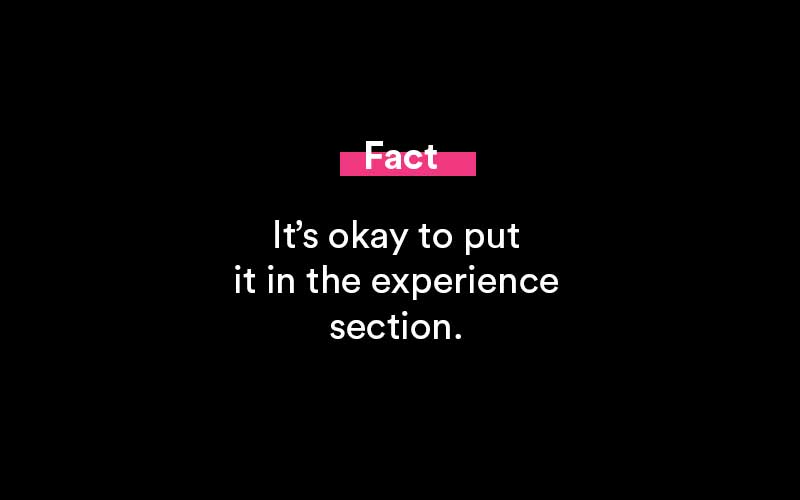
Match your experience with the job description/job ad
When stating your work shadowing experience, make sure it corresponds to the position's required responsibilities. Review a job post and highlight or make a note of any specific abilities it requires, such as planning, scheduling, attending status meetings, or learning and applying applicable safety regulations.
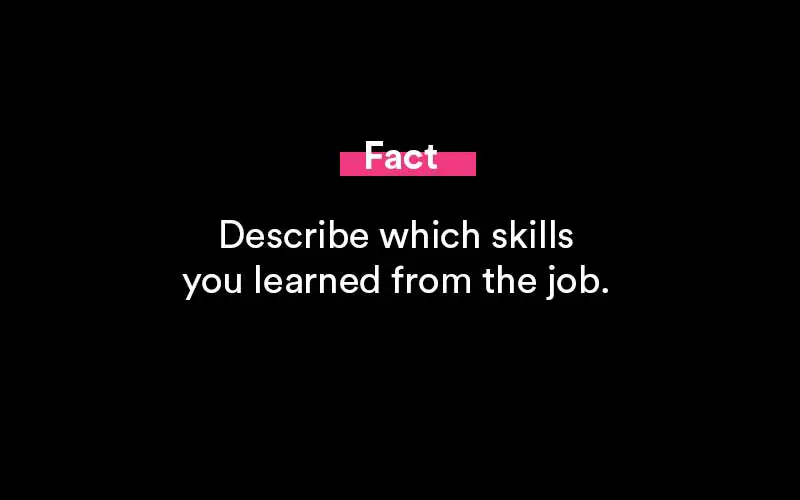
For each job application, you can modify how you list or explain shadowing tasks, as well as whatever shadowing obligations you want to submit, as long as it's an accurate depiction of what you know and can perform.
Template for listing job shadowing
[Experience]
[Name of company, address]
[Dates employed]
- [Shadowing responsibilities]
- [Shadowing responsibilities]
- [Shadowing responsibilities]
- [Shadowing responsibilities]
- [Important accomplishment]
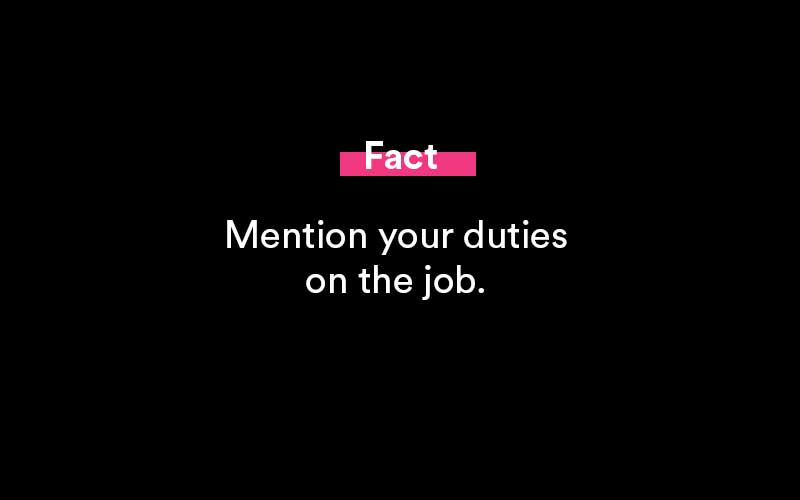
Example of listing job shadowing on a resume
To help you mention your own work shadowing experience on your resume, use this example:
Mariposa Enterprises
2018 to 2020
- I shadowed CEO John Smith to learn about the operations of a corporate office with 250+ workers around the country.
- Attending budget meetings in order to get insight into monthly financial planning and budget rearrangement in order to fulfill corporate objectives.
- Participated in a staff training session focusing on the development of technical abilities in data analysis and programming.
- I tracked the progress of the project from start to finish.
Exceptional achievement: Implementing client appreciation measures has been suggested (i.e. birthday greeting cards, private Q&A webinars, etc.). Client retention improved by5% and overall business satisfaction climbed by approximately 14% one month after I introduced some of my suggestions. The high amount of favorable client feedback delighted employees as well.
Common questions
Questions from job seekers.
Is it a good idea to job shadow someone?
Yes, it can help you to gain insight into the industry. Shadow experience is valuable for your resume and career. Including a key achievement while shadowing can be highly impactful for a hiring manager.
Is it useful to gain new skills?
Yes. It can be helpful in technical skills development, soft skills development, and other key areas of work-related capabilities.
Is shadowing considered experience?
It depends on the industry. For example, in medicine, it is not. Because shadowing is typically hands-off and observational primarily, it is not considered clinical experience. Shadowing, on the other hand, helps prospective medical students to gain clinical experience and learn what to expect from a career in medicine.
What are the advantages of job shadowing and job shadow experience?
Learn about the duties and tasks of other members of the team and departments. Consider and learn from your colleagues' experiences. Examine how other employees and teams operate. Get a better understanding of how the University works by looking at the broader picture. And experiment with several job possibilities.
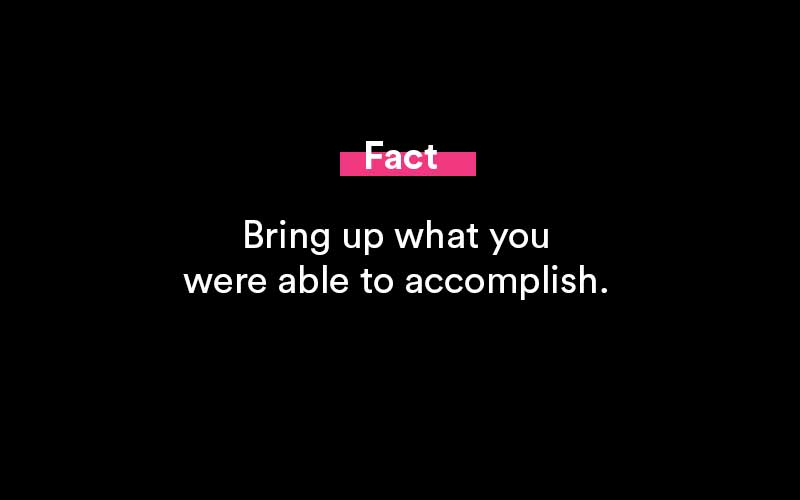
Similar resources
- Sales Skills
- Functional Resume
- Interpersonal Skills
- Resume Format
- Volunteer Work on Resume
- How to List References on a Resume
- What is a CV?
- Resume Summary Examples
- Language Proficiency Levels
- Professional Background
- How to Pout Shadowing on a Resume
- Job Hunting
- How Far Back Should a Resume Go
- How to List Publications on Resume
- Skills List for the Resume
Popular Resources

Featured
35+ Phone Interview Questions & Best Sample Answers
Phone interviews have become a core part of the process when attempting to find a secured placement for an open position. Companies receive massive responses from potential candidates for any..

Featured
12+ Best Questions To Ask A Recruiter
Concerning a job search, you might receive numerous offers from your recruiters. Before you choose one, you need to assess all the conditions, for which it is vital that you know everything associated with the offered position..

Featured
Answering "What Makes You Unique" In A Job Interview
Answering this question during a job interview requires more than knowing why you are unique as an individual. Yes, the true scientific answer is made up of two main components: your..

Featured
250+ Ice Breaker Questions for Life
An ice breaker question is a question that’s asked from one person to another person in order to act as a conversation starter. It brings a connection...

Featured
10 Best Answers to "What Motivates You?"
Open-ended questions like “What motivates you?” can elicit a deer-in-the-headlights reaction from job candidates if they are unprepared. It’s a broad question and can leave the interviewer..

Featured
Answering "How Did You Hear About This Position" In An Interview
A lot of interviewers ask this question - how did you hear about this position? This way they can judge you if you are a passive or an active job seeker..

Featured
8 Best Thank You Emails After an Interview (Samples, Free Templates)
Writing a thank you note after an interview says a lot about you as a potential employee. Most notably, it says that you care about the opportunities presented..

Featured
Writing a Resignation Letter (How To Write It, Samples)
Writing the perfect letter of resignation is more of an art than it is a science. And we’re going to cover how to master that art form in this full guide..

Featured
How to End a Letter (Example Salutations, Sign Off's)
Knowing how to end a business note or email is an important skill to develop. It helps portray a sense of confidence, respect and tone to your message..
